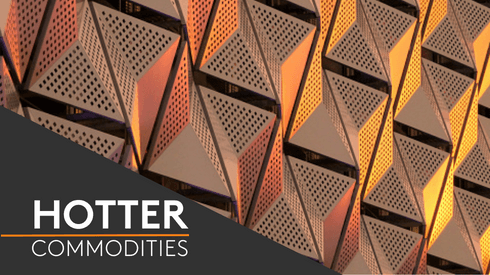Prices for 5052 segregated low-copper alloy clips, 3105 segregated low-copper alloy clips and used beverage cans all stepped a penny higher on Monday March 5, according to American Metal Market’s latest assessment, while all other aluminium scrap prices were unchanged.
Mill-grade prices so far have been much slower to react than the Midwest premium to news that President Donald Trump could levy a blanket 10% tariff on US aluminium imports.
“It’s a fool’s errand to project what the final bill will look like. The Midwest premium rise is folks seeking to get in front of purchasing primary aluminium in advance of a potential tariff. They are willing to pay more relative to the premium on the basis that there is only so much available. It’s a financial gamble,” one supplier said.
American Metal Market’s latest assessment of the P1020 spot premium hit 16.5-17.5 cents per lb on Tuesday, the highest level since April 2015.
Other aluminium scrap suppliers shared similar sentiment, noting that adequate scrap volumes combined with pockets of demand and general uncertainty surrounding the potential tariff have left mill-grade scrap prices mostly status quo for the time being.
“It’s still too early to tell what effect the [Section] 232 announcement will have on scrap aluminium prices. Other than the jump in the Midwest premium, no one appears to [be] making a move based on their speculation, which I think is [a] good thing so far for scrap dealers. Sooner or later it will have an effect but for now there seems to be a narrow speculative view,” a second supplier said.
“The scrap numbers really haven’t gone up because of the availability of scrap. There’s too much scrap. The scrap spreads have widened since November and the traditional spreads have been out the window. It’s creating a dilemma as the Midwest premium continues to grow,” a third supplier said.
Mixed demand is keeping a temporary lid on prices, according to other suppliers, who noted that they have yet to really see a noticeable uptick in purchasing activity.
“There’s too much scrap out there still and we’re waiting for something to come down the pipeline before we react. Most buyers are still out and not looking for deliveries until May [and] only a handful of buyers are quoting near-term deliveries. The Midwest premium run is more of [a] financial play than anything,” a fourth supplier said.
“Pricing [is] really more of the same. No new capacity and appointments are like pulling teeth to get. Nobody needs [material] but that could change quickly if canceled material needs to be made up quickly. We can only hope. Need some demand to work off of,” a fifth supplier said.
Despite the uncertainty surrounding the final outcome of the tariffs, many suppliers expect there to be more of an upside than a downside to the market.
“Although [the London Metal Exchange] has sold off a bit, pricing remains stable to up a bit on prime grades… I think it will ultimately have a positive effect on the scrap market as well as increase demand for domestic aluminum as the tariffs will be designed to level the playing field,” a sixth supplier said.
The LME’s three-month aluminium contract closed the official session at $2,140.50 per tonne (97.1 cents per lb) on March 5, up marginally from March 1. But the contract stepped higher on Tuesday, closing the official session at $2,155 per tonne.
Meanwhile, some smelter-grade scrap consumers said they are wary of the Section 232 developments, with questions lingering on what products will be included and the potential impact on the secondary industry if the tariffs are imposed.
“I believe that scrap will see some increase going forward, especially the grades that go into the mills. Having said that, the secondaries will struggle to compete unless [the] 380 [price] assessment reflects increases [in] freight, silicon and scrap,” one scrap consumer said.
“[We’re] just not sure how it all will affect scrap,” a second scrap consumer said.
“Last week was crazy… I think everybody is waiting to see what happens. My prices haven’t changed; I have good metal and I heard all the other smelters do too,” a third scrap consumer.
But others fear that margins could come under pressure, especially on the low-copper alloys.
“I am still [holding] at my prices but [it is] getting very hard to buy at that level. We made lots of quotes but not much success. [One buyer] is quoting crazy high numbers for a few loads and everyone thinks they can get that from everyone… Margins are being compressed,” a fourth consumer said.




